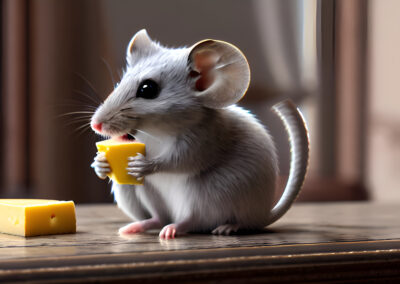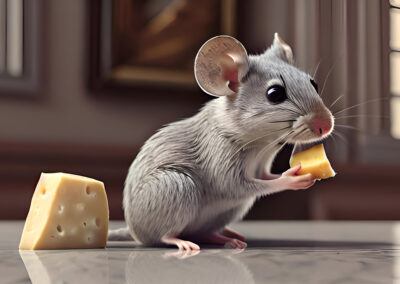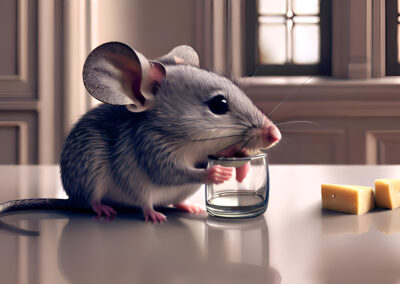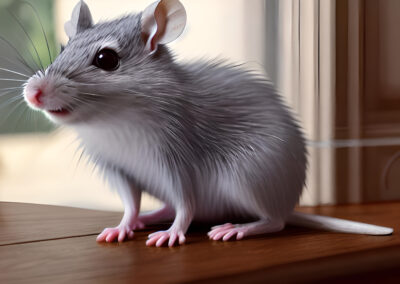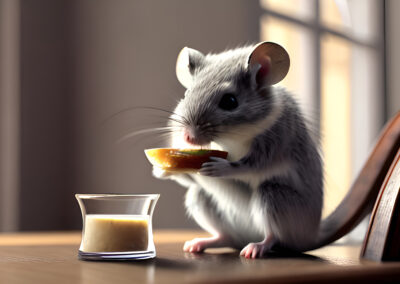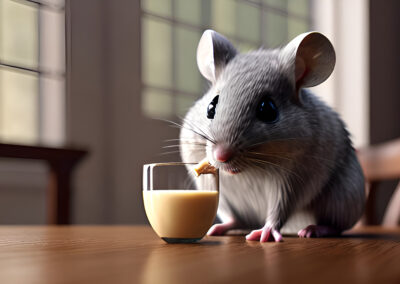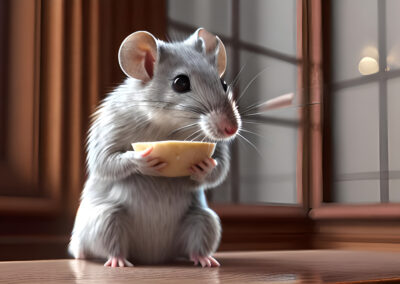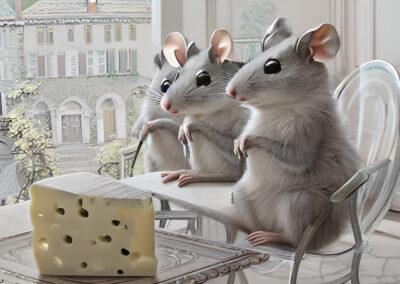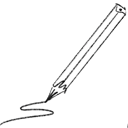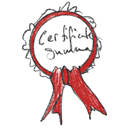Rule 6 | Associate lines
Lesson 1 | AI Mice to associate with
40 min.
You will practice to associate all lines and open your repository of lines to lines, that lead from the silhouette deep into the form of an object.
Step 1 | Watch how these mice are done! Look carefully!
It may even happen, that you see the fifth paw after a while
These mice are made with Artificial Intelligence. (More further down.)
But why do we take these curious mice as the starting point for our sketches? The answer is very obvious: AI is fooling us in a similar way as we do with fluttering, crossing lines, open areas, and line clusters.
Because the AI also triggers our repertoire of images, that is this stock of experienced visual impressions.
AI-Mice
AI-generated : intricate, highly detailed, artstation, concept art, smooth, sharp focus, natural lighting, art by artgerm and greg rutkowski, 3D, characters / Create intricate, highly detailed concept art that focuses on smooth, sharp edges and natural lighting, such as art by Artgerm and Greg Rutkowski. / Incorporate 3D elements into the art, such as characters or other objects. / Use a variety of mediums and techniques to create the art, such as pencil, charcoal, and watercolor. Incorporate a variety of textures into the art, such as fabric, fur, and metal. (hess.works)
Script
Hello and welcome to the 6th rule. We are drawing mice. And I assembled here some seven mice, created by artificial intelligence. I’d like to go through them and show you how you can improve your sketches by drawing more lines that are associated. So I mean that you lead some lines into the form. Oh, by the way, you see, this mouse has lost its tail. This is the artificial intelligence that neglected it. But we do not see it at the first glance but at the second.
Okay, back to the task. We are now asked to associate the lines. So not only the lines that bound the form together that are in the silhouettes, but also lines that lead to the depths. They allow the observer to go really immersed deeper into the picture because of the depth and because it gives dimension. I. mean it leads like an elevation line through the landscape of the surface of an object. It’s not only about depth and dimension, it’s also about movement and energy. You see how the forms behave and where the lines go to. And you can also lead the eye by the line to certain areas, like the eye of the object or the mouse of the object, the nose tip of the object. And this is very helpful. So in the end, actually, we say it increases complexity in drawings and this is what’s triggering your images and your audience to go deeper into your drawings.
Okay, I start now drawing this mouse. As usual, I start with the tip of the nose because this is a special point. I do some hints where this could be about the size and what direction. The back of the nose goes here … The eye could be, … and the other eye. And the ear, maybe the other ear. …
Some first lines, but a very faint line, so be careful. Then the piece of cheese where could be the feet, maybe you almost can’t see the details. And the back of the mouse goes down here, something like this. And then the tail would start here. But this is not what I focus on. Okay, so I start with the nose or with the eye. I do the dark of the eye. But as we did before, not the whole of the eye, because I want. To weave actually the picture to a detailed form.
So now I’m not only going to work with line bundles, but I start with the line bundles. Actually, I need now those flipping-out lines, those lines that escape from the actual form or idea I want to sketch. And I take them. And I can use other lines like these lines here, to find the form, where it goes to, where it’s really formed in the meaning not only. The open form, but also here, this mustache. And again, I’m just triggering the image. What direction is between the ears? Care about this, but in the ears then I have here these lines that I add to my drawing. And I do the same here with the pore of this animal. Actually, I do not count the number of fingers because artificial intelligence can learn from it very well. It neglects the details because as well, artificial intelligence triggers the inner images that we complete. That’s why it’s not. It may happen that your mouse has two or three or five paws or feet. And by the way, here you can see this, but that’s not important for our brain because we see the overall and not the detail. And while drawing, you can focus on the right form like this.
By the way, it’s even Cézanne with his bathing women. He has painted some women with three feet. A very famous image of the bath, and women, and nobody cares about it.
Okay, this is my second paw. And here I neglected detail. Here tail starts. I just make the starting of the tail and then I draw the lines that go into the form, the ones that are associated with the form. And this helps me to find the form of all the details. Okay, that’s it. I’m going to pronounce here a little bit of shade in here. Not really shadow, but shade. That helps maybe here as well. So I cross-hatch. You can see now those lines here. The error of the ear. They help me to give the drawing speed because mice are speedy creatures. And this helps me to bring in this information of speed. You can see I use here the.
Concept of open lines. Here I do not have actually any information. The same was here. So it was maybe triggered by this fact. Here I work with line bundles to find the form and I put a little bit of shade in it so that it’s easier to understand where an object end and another start. This can help.
Whatever we do in drawing, we have the ten rules and they work together. I try to focus on every drawing to a certain rule, but actually, you always have to work with all the rules and then you have a good result. Yeah, that’s it.
Happy sketching.
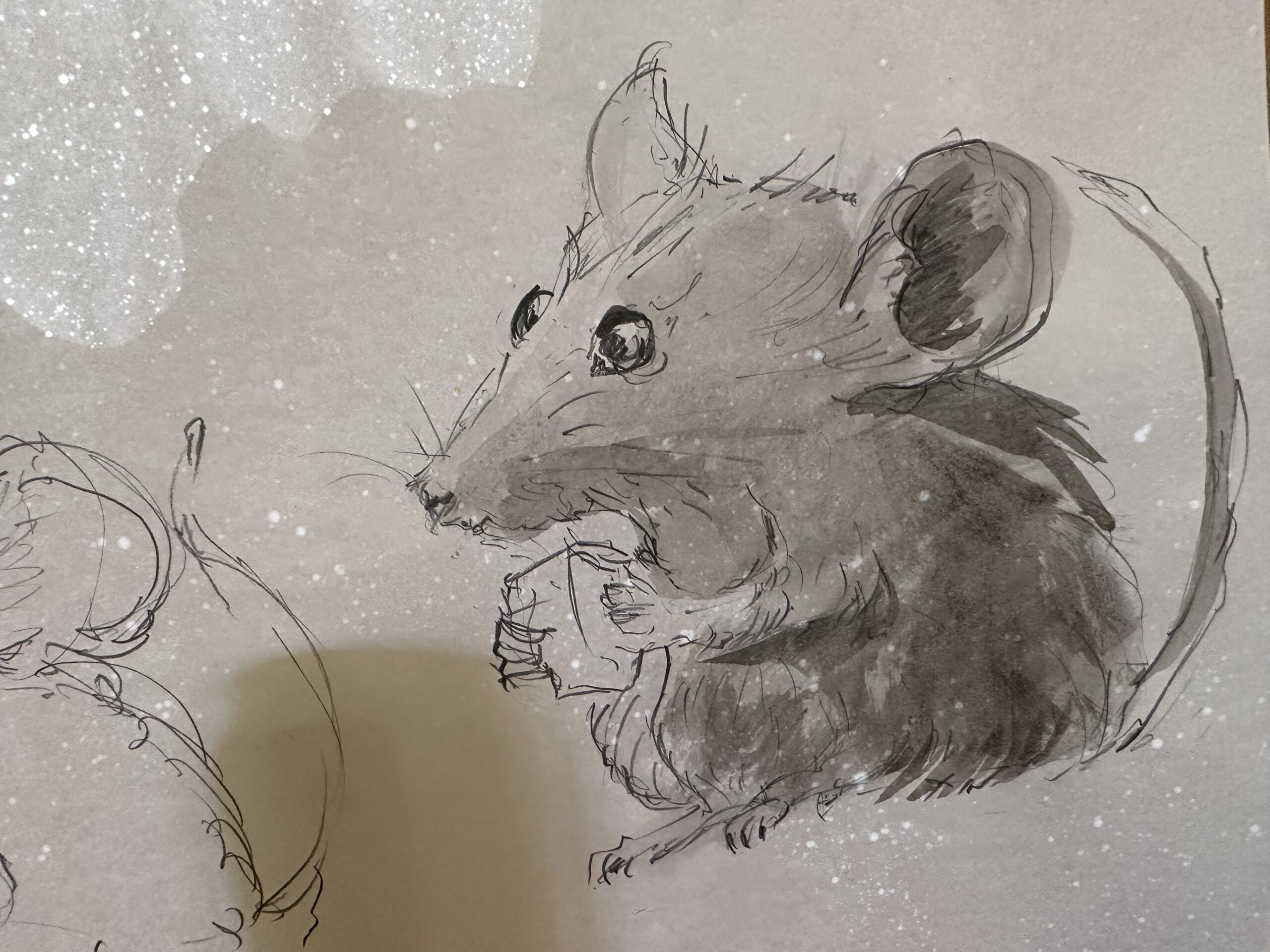
ASSIGNMENT | Exercise your sketching skills with these seven mice to a mob of mice
To upload, use the buttons further down.
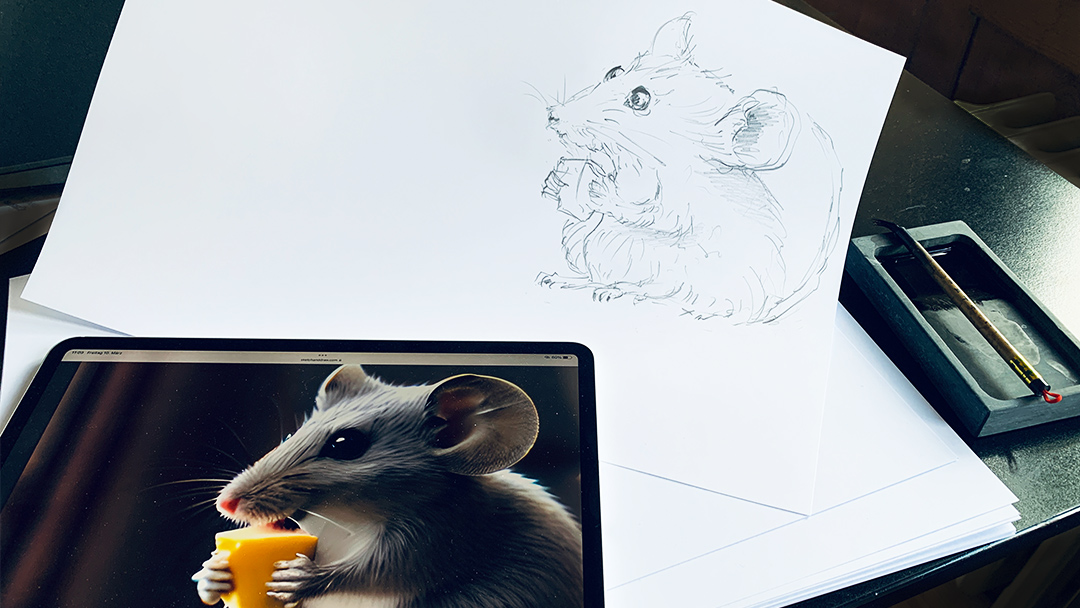
Free trial
Try one lesson and decide if you want to do the whole course. Click for the free trial ...
Certificate
If you want to achieve a certificate that proves your sketching skills, get all your information here ...

